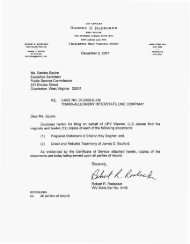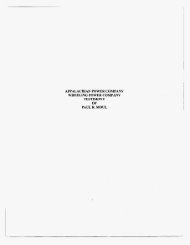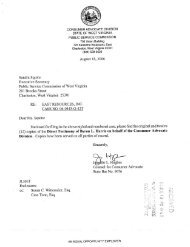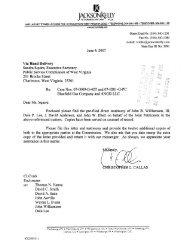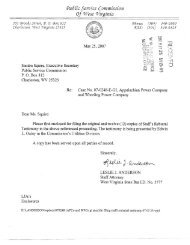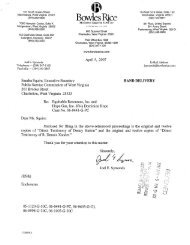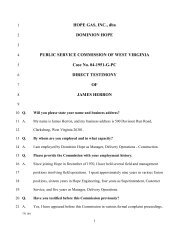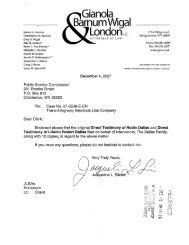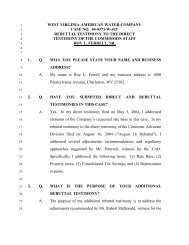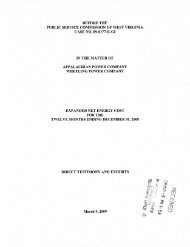Direct Testimony of Thomas M. Hildebrand - Consumer Advocate ...
Direct Testimony of Thomas M. Hildebrand - Consumer Advocate ...
Direct Testimony of Thomas M. Hildebrand - Consumer Advocate ...
You also want an ePaper? Increase the reach of your titles
YUMPU automatically turns print PDFs into web optimized ePapers that Google loves.
The State Energy Efficiencx Scorecard for 2006. ACEEE<br />
* States nith etemplarq iimo\atn e finance mechamsms \?ere giyen an evtra pomt<br />
Research and Development<br />
In 1990, several state energy R&D institutions established the Association <strong>of</strong> State Energ<br />
Research and Technology Transfer Institutions (ASERTTI)” in response to the increasing<br />
need for state initiatives in R&D. In addition to providing a variety <strong>of</strong> services to promote<br />
the creation, development, and commercialization <strong>of</strong> new technologies for enera efficiency,<br />
state R&D efforts can address a number <strong>of</strong> market failures that persist in the enere services<br />
marketplace (Pye and Nadel 1997). State-level institutions have the advantage <strong>of</strong> focusing<br />
on regional needs and opportunities that are not addressed by national programs. State<br />
institutions can also coordinate a range <strong>of</strong> resources from across the state.<br />
Other Policies<br />
Iiznovcrrive.finnizcing. States are developing a wide range <strong>of</strong> innovative financing mechanisms<br />
to finance programs to implement energy efficiency improvements in existing buildings and<br />
ne\\- state facilities, including revolving loan funds, tax-esempt master lease-purchase<br />
agreements, lease revenue bonds, pension funds, and performance contracting. These<br />
mechanisms are usually administered by the state energy <strong>of</strong>fice or other lead agency, which<br />
coordinates the program across multiple state agencies.<br />
1oil.a has been a leader in state financing for public facilities. Legislation passed in the 1980s<br />
established the Iotl-a Energy Bank, which allows state agencies to use lease-purchase<br />
financing and loans for energy-management improvements, and the State Facilities Program<br />
(EPA 2006d). The Tesas LomSTAR program ivhich was initiated by the Texas Energ,<br />
Office in 1988? uses a revoll-ing loan fund mechanism that is funded at about $100 million.<br />
As <strong>of</strong> April 2006, LoanSTAR funded a total <strong>of</strong> 187 loans <strong>of</strong> which 17 were to state agencies,<br />
46 to institutions <strong>of</strong> higher education, 36 to local governments, 78 to independent school<br />
districts, and 10 to counp hospitals (SECO 2007).<br />
50



